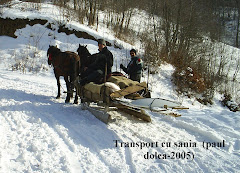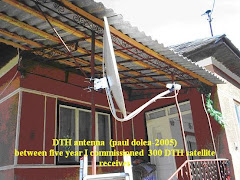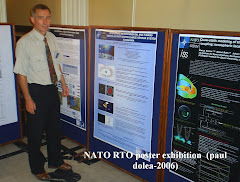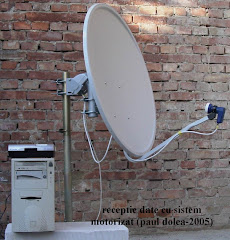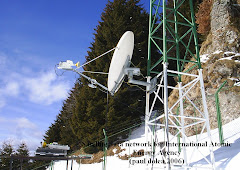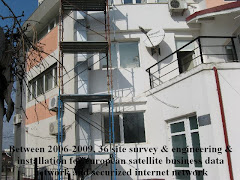Una din directiile de cercetare in care si eu sunt direct implicat, consta in studiul modificarilor care apar in straturile joase ale ionosferei in asa zisa zona pregatitoare a cutremurului, cu cateva zeci de ore inainte de declansarea unui cutremur major (M>6). Reteaua de receptoare VLF/LF ale proiectului INFREP (International Network for Frontier Research on Earthquake Precursors) acopera pricipalele zone cu seismicitate ridicata ale Europei.
In perioada 2013-2014, am facut o analiza amanuntita a modului in care a fost proiectata reteaua INFREP si a performantelor tehnice ale receptoarelor radio VLF si LF utilizate in statiile de monitorizare. Deasemenea am facut o analiza (partiala) a datelor culese de aceste receptoare in ultimii ani. O parte din rezultatele si concluziile acestor analize le-am sintetizat in articolul Aspects regarding the use of the INFREP network for identifying possible seismic precursors. Acest articol a fost publicat in revista Physics and Chemistry of the Earth, care este una din cele mai importante (la nivel mondial) reviste stiintifice din domeniu. Articolul poate fi descarcat gratuit (pana la data de 21 ianuarie 2015) in format PDF de pe saitul editurii ELSEVIER, la adresa http://www.sciencedirect.com/science/article/pii/S1474706515000698?np=y
Reproduc mai jos abstractul acestui articol:
In the last decades, one of the main research directions
in identifying seismic precursors involved monitoring VLF (Very Low
Frequency) and LF (Low Frequency) radio waves and analysing their
propagation characteristics. Essentially this method consists of
monitoring different available VLF and LF transmitters from long
distance reception points. The received signal has two major components:
the ground wave and the sky wave, where the sky wave propagates by
reflection on the lower layers of the ionosphere. It is assumed that
before and during major earthquakes, unusual changes may occur in the
lower layers of the ionosphere, such as the modification of the charged
particles number density and the altitude of the reflection zone.
Therefore, these unusual changes in the ionosphere may generate unusual
variations in the received signal level.
The
International Network for Frontier Research on Earthquake Precursors
(INFREP) was developed starting with 2009 and consists of several
dedicated VLF and LF radio receivers used for monitoring various radio
transmitters located throughout Europe. The receivers’ locations were
chosen so that the propagation path from these VLF/LF stations would
pass over high seismicity regions while others were chosen to obtain
different control paths.
The monitoring receivers are
capable of continuously measuring the received signal amplitude from the
VLF/LF stations of interest. The recorded data is then stored and sent
to an INFREP database, which is available on the Internet for scientific
researchers. By processing and analysing VLF and LF data samples,
collected at different reception points and at different periods of the
year, one may be able to identify some distinct patterns in the envelope
of the received signal level over time. Significant deviations from
these patterns may have local causes such as the electromagnetic
pollution at the monitoring point, regional causes like existing
electrical storms over the propagation path or even global causes
generated by high-intensity solar flares. As a consequence, classifying
these perturbations and minimizing them (when possible) would represent
an important step towards identifying significant pattern deviations
caused by seismic activities.
Taken into consideration
some of the issues mentioned above, this paper intends to present some
aspects meant to improve the overall performance of the existing INFREP
network. The signal-to-noise ratio improvement of the monitoring
receiver may be achieved by relocating the antenna (or even the entire
monitoring system if possible) in areas with less electromagnetic
pollution within the VLF and LF bands. Other solution may involve
replacing the existing electric “whip” antennas with magnetic loop
antennas.
Regarding the measuring method, long-term
averaging of the received signal to reduce the electromagnetic noise
should be carefully applied. If the averaging time is too long, there is
a risk that, during a seismic event, the details of the received signal
envelope would be lost. Moreover, this may reduce the possibility of
making correlations between the monitored stations and INFREP receivers
in case of sudden ERP (Effective Radiated Power) variations of the
VLF/LF stations. For the same reason, the time synchronization of the
recorded data using (for instance) GPS technology is highly recommended.
Other
aspects related to the overall performance improvement of the INFREP
network consist of monitoring other VLF/LF stations such as the
Krasnodar station (south of Russia), part of the ALPHA/RSDN-20 VLF
navigation system, or the 77.5 kHz DCF77 time signal transmitter (near
Frankfurt am Main, Germany). Moreover, the installation of a new
reception point in Romania (near Cluj-Napoca) for monitoring the Vrancea
area (within the Carpathians Mountains) and the Adriatic region will
provide complementary scientific data within the network. (ELSEVIER)






























































